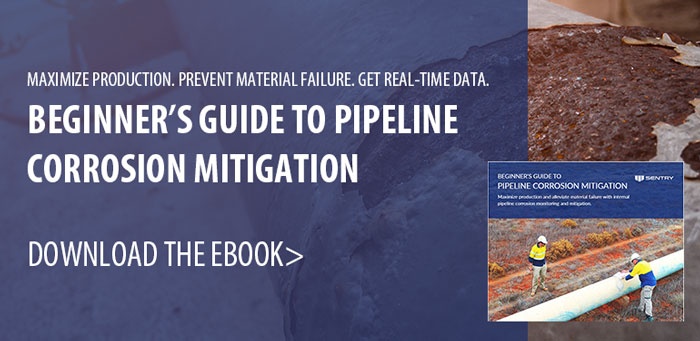
According to the Farmers’ Almanac, this year’s winter is predicted to be a “polar coaster” with freezing, frigid and frosty weather across two-thirds of the country. This level of extreme weather leaves midstream pipelines at risk for damage such as freezing.
Prepare Your Pipelines for Extreme Weather
Companies utilize a variety of measures to prevent the wear and tear that freezing can cause on their processes. These include:
- Dehydration Units - Creating an arid climate allows for little to no moisture and in turn little to no freezing.
- Dew Point Adjustment - Heat and insulation keep the process temps above the dew point. These are more often used on regulators and process components with large pressure drops due to the additional temperature drop (see the Joules Thompson effect).
- Methanol Injection - Lowers the freezing point of water and water-based liquids that can make their way into pipelines. It’s typically injected into pipes with an injection pump via an atomizer.
The most common method of these three is methanol injection due to its economical nature. Additionally, these injections provide practical solutions as they are:
- Water-soluble
- Relatively low in initial costs
- Low in equipment requirements
- Low cost injection systems can be utilized
However, the question of how much methanol to inject often arises. These injections carry 02, which increases the potential for internal corrosion within pipes if too much methanol is added. Yet, under-injecting methanol can leave pipes at risk of freezing. Finding this balance is crucial to cost-effective and sustainable pipeline freeze prevention.
Four Steps for Successful methanol injection
1. Start With the Right Questions
With the potential to introduce the wrong amount of methanol, it is critical to ask these questions before injecting your pipes this year:
- Did we have freezing issues last year that we need to address this year?
- How are we currently injecting methanol?
- Do we frequently have to increase the methanol rate to battle freezing?
- Do we over-inject methanol just to be on the “safe side”?
Answers to these questions can help determine if you need to reassess your methanol injection plan for this winter.
2. Choose an Atomizer
Using the right atomizer nozzle for your desired feedrate allows for optimal dispersion and distribution of your methanol.
3. Pick Your Injection Point Wisely
The location of the injection point will determine the effectiveness of any chemical injection, including atomization of methanol. Choosing the optimal injection point that is clear of Viton seals and the most advantageous injection method is just as critical as choosing the correct chemical.
4. Determine the Methanol Injection Rate
Determining the right amount of methanol can be challenging because methanol undergoes property changes after injected.
The amount of methanol injected must be sufficient to suppress hydrate formation in the aqueous phase and replace methanol “losses” during the vapor phase. Engineers can determine the right amount of methanol by calculating the sum of methanol needs in each of these phases.
Determining the method best suited for your bottom line and executing according to best practices will ensure you safeguard pipelines throughout the winter; ensuring longevity to your pipelines and significant long-term savings.
Sentry carries an extensive selection of corrosion monitoring products and has over 30 years of service experience. Explore your options for upstream/midstream corrosion monitoring and chemical optimization solutions.





